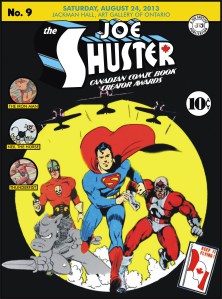
It’s that time of year again when Canadian golden age creators are considered for inclusion in the Joe Shuster Awards Canadian Comic Book Hall of Fame.
I mentioned that this was coming up again in passing to Kevin Boyd, one of the main organizers, at the premier of “Lost Heroes” a couple of weeks ago without knowing that he recently and tragically lost his main life partner, Debra Jane Shelly. Kevin’s own feelings are tenderly expressed on the recent Shuster Awards page. The doors we go through in life aren’t often fair or easy. I wanted to express my sadness and empathy for the depth of your loss Kevin and I hope the memories of your time together has given you the strength you need to find the proper place in your life for this.
I wanted to do a little prep work in this area in this column so that whenever Kevin gets the energy to come back to this stuff, I might have a bit of a better perspective on who should be considered for 2014. Here are past inductees in the area of the Canadian Golden Age:
2005 Joe Shuster (1914-1992)
2005 Leo Bachle (aka Les Barker) (1926-2003)
2005 Adrian Dingle (1911-1974)
2005 Ed Furness (1911-2005)
2006 Jon St. Ables (1912-1999)
2007 Gerald Lazare (1927-)
2008 Ted McCall (1901-1975)
2009 George Menendez Rae (1906-1992)
2013 Murray Karn (1924-)
2013 Vernon Miller (1912-1974)
Certainly an august constellation of creators but who are the two additions that should be inducted this year?
Here is an alphabetic list of 15 creators and one builder (Cy Bell). The contributions of each of these screams for inclusion into the Joe Shuster Awards Canadian Comic Book Hall of Fame.
Sid Barron – worked on Canadian Heroes Comics for Educational Projects in Montreal as well as having a lengthy career in editorial cartoons.
Cyril Vaughn Bell – founder and publisher of Bell Features Publications, one of the central and perhaps the best known runs of Canadian war-time comics starting with Wow Comics #1.
Piercy Hereward (Spike) Brown – creator of Cosmo and His White Magic in Rocket Comics and Sergeant Canuck in Bing Bang Comics, mainstays of Maple Leaf Publications
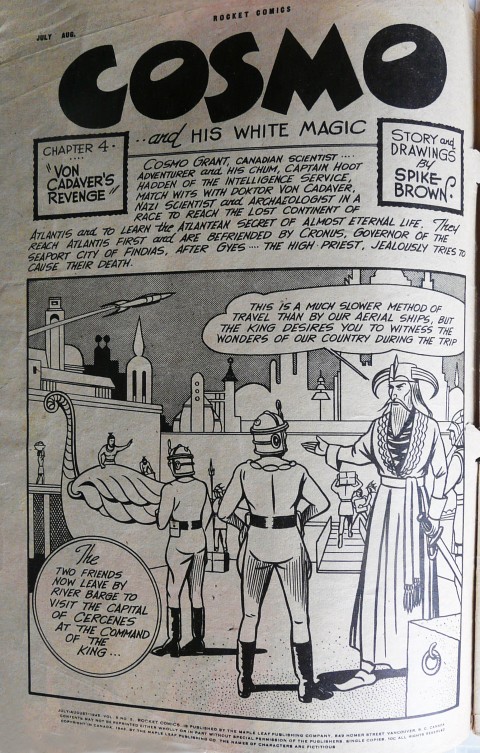
Bert Bushell – creator of Pinky in Bing Bang Comics, Callahan The Detective in Rocket Comics, and Senorita Marquita in Better Comics.
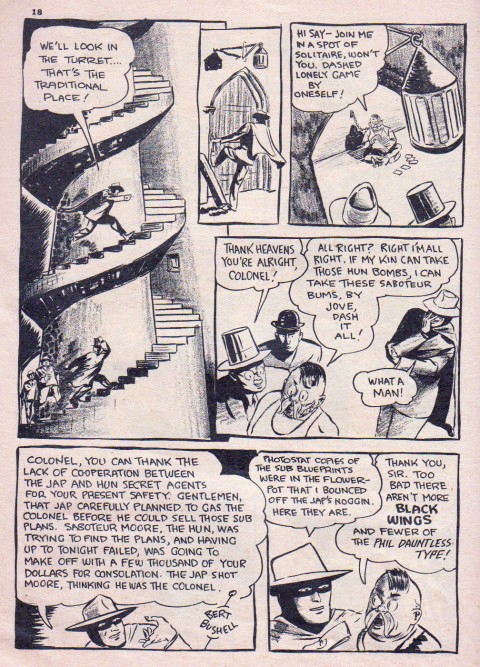
Al Cooper – creator of Capt. Red Thortan in Active Comics and Scotty MacDonald in Dime Comics, noted for his rendition of airplanes and other war machinery.
Mel Crawford – worked at Bell Features for just about a year, then left at the end of the forties for the States and had a long and prolific career in comics and illustration.
Manny Easson – creator of Dizzy Don, wrote and drew all the contents of The Funny Comics for Bell Features.
Shirley Fortune – creator of Mono The Air Cobra in Rocket Comics which became Bush Pilot after the war and Circus Girl in Better Comics.
Edmond Good – the first Art Director for Bell Features a role taken over by Adrian Dingle, also creator of Rex Baxter in Dime Comics #1, moved to the States and worked on Scorchy Smith, Dagar, and Phantom Detective.
Rene Kulbach –in WECA comics with Dingle since Triumph Comics #1 and most famous for creating Tang for Triumph as well as The Phantom Rider in Wow Comics.
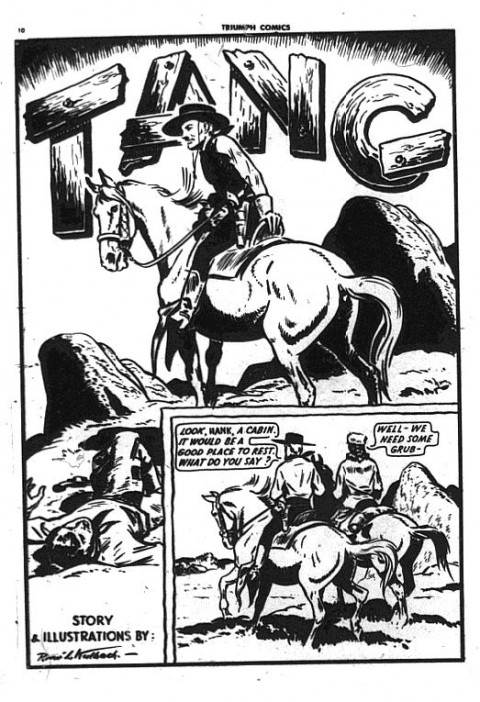
E. T. Legault – creator of Dart Daring and Whiz Wallace in Wow Comics #1 as well as Thunderfist in Active Comics #1.
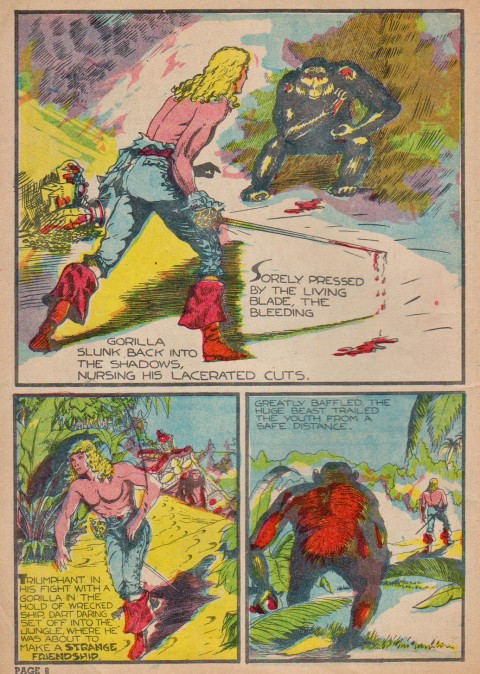
Ross Saakel – creator of Captain Wonder and Ace Barton in Triumph Comics and main artist on Spike ’n’ Mike in Joke Comics
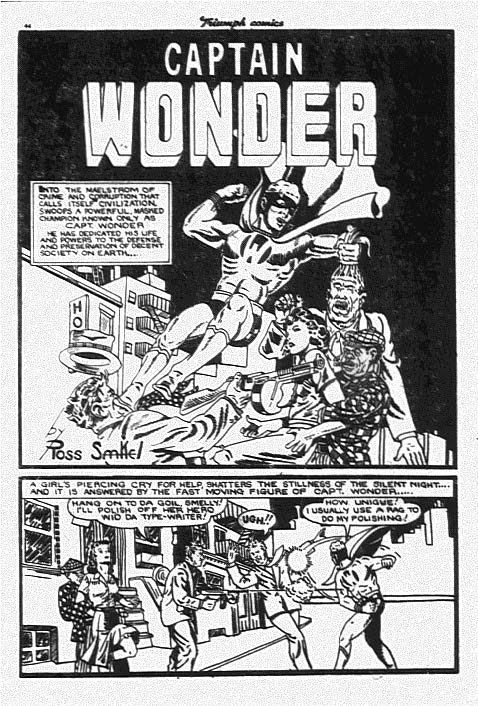
Lou Skuce – one of the most famous Canadian cartoonists of the first half of the last century… his work appeared in Bell Features mostly as full page filler cartoons
Tedd Arthur Steele – quirky and prolific, creator of Speed Savage and artist on Private Stuff, Dixon of the Mounted, and Woody and the Wolf.
Doris Titus (nee Slater) – drew Pat the Air Cadet starting with Aces 3 Comics #1 and in Grand Slam Comics… created Martin Blake the Animal King for early issues of Three Aces Comics and drew and wrote Penny’s Diary in Active Comics.
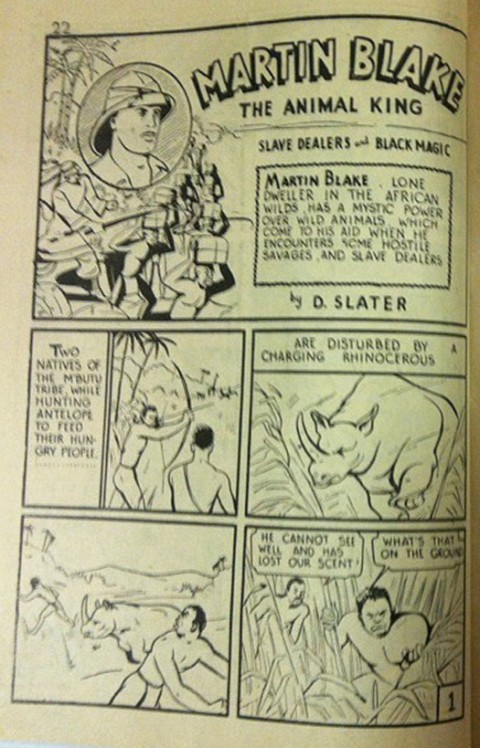
Ernie Walker — Artist for The Adventures of Lucky starting in Lucky Comics #1 and The Honourable Freddy in Better Comics as well as the creator of Peter and Peggy in Grimstead Castle also in Lucky Comics
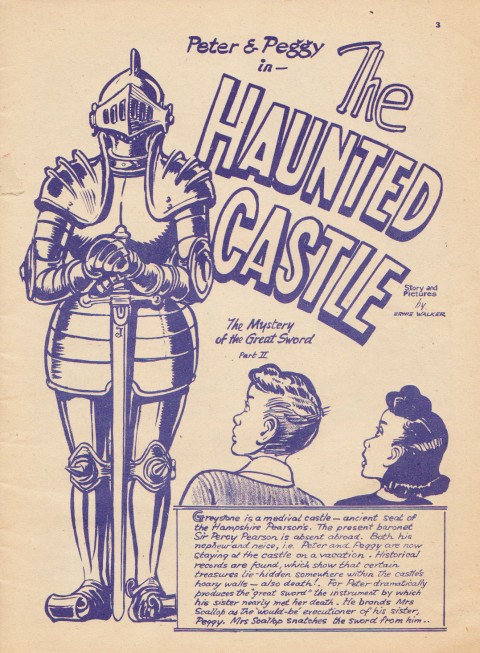
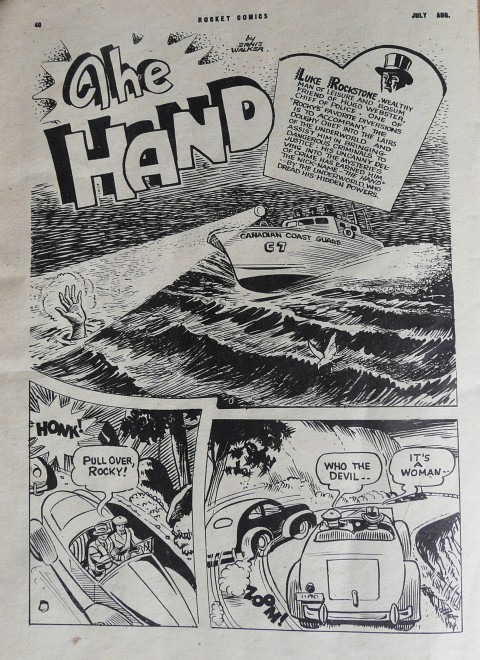
It could be the first woman Canadian Golden Age creator in either Doris Slater or Shirley Fortune. I tend to lean toward Ted Steele for his large body of work during the period of the Whites and for his creation of one of its central characters in the form of Speed Savage.
Lou Skuce was a giant in the cartooning world and maybe deserves to be considered for this fact alone. In any event, you could make a good case for each and every one of them so I urge you to vote in this week’s poll so that we can see what the readers of this column think.
[yop_poll id=”3″]




Cy Bell, though not a creator, belongs in the Hall.
Because of the age of the work I think it’s important to honour living creators from the WECA period.
Thanks Ivan, re: Debra. It’s a huge loss for everyone who knew her. I still can’t believe it.
I think we can probably initiate the email discussions soon on this. You’ve certainly got a great selection of possible inductees from the WECA period. I think we can probably induct at least two from this time period in 2014.
I agree, Walt. I missed including the following paragraph from my initial draft when I published the post:
My contention is that Cy Bell should be a shoo-in. With the over 300 individual issues that Commercial Signs/Bell Features put out from 1941-46, you have just about half of the WECA comic output all begun and published by Cy Bell. Who then should be the other person.
This paragraph should have come just after the last graphic. So the idea of the post is that Cy should get in and who should we pick to go with him. The list is for this other pick.
You have a good point Scott. Last year we inducted Murray Karn, who is still with us and Gerald Lazare has already been inducted. This leaves Jack Tremblay and Mel Crawford. Both worked in the WECA period for about a year each. Their work for Bell Features doesn’t stand up in quantity to any of the other people on the list, but Mel Crawford’s work in American Comics has been huge. Your point is very worthwhile but I, myself, lean towards the creators output.
Thanks, Kevin. Walt and I currently support Cy Bell as one who should be an inductee this year, but we are open to consideration of any of the others.
I think Cy Bell is a good choice, especially at this time, and agree with Scott that living creators deserve and should be honoured before they pass on.
Correct me if I am wrong, but the total Commercial Signs/Bell Features/Hillsborough studios output would be approximately 168 books, not 300 books:
Dime Comics # 1-29
Triumph Comics # 1-31
Active Comics # 1-29
Dizzy Don/Funny Comics # 1-22
Commando Comics # 1-23
Wow Comics # 1-30
That is if you only count the WECA books and not the post-WW 2 reprint stuff
Of course you are right to catch this error, Stephen. I had the number of 300 or so floating around in my brain because I was thinking of the number of comics that there are in Bell Features fonds at the National Archives. I should have known from the 180 or so different microfiche renditions in the Bell Features microfiche collection. When you add the 27 issues of Joke Comics to your list you get 191 plus the 6 15 cent compendiums such as the Nelvana nn, plus Whittle Craft, plus Jet Man 2, and all those New Dime, New Action, issues, plus Colossal Comics, plus the issues of Unusual Comics, all those other 1946 issues of Terrific Comics, Red Hot Comics, Smasher, Comic Crimes, and those issues of Nitro, Johnny Canuck, The Brain, F.B.I. Comics probably brings us up to around 225-30. But the core is the original 191 plus the 6 1945 compendiums and maybe the two different covers of Colossal Comics gives us just about 200 books. Thanks for noticing the slip, Stephen.
Yes. I forgot Joke Comics run Ivan. My bad. You are certainly more thorough than I am. Kudos!
I find the Dingle cover swipes for books like FBI comics and Nitro comics very cool as well and the compendiums are neat as well
It’s funny, Stephen. I’ve just been looking at the compendium books and the three I’ve examined all have a previously unpublished story. You’ve recently reported this about the Nelvana book and I’ve looked at the Speed Savage and the Tang and they both have previously unpublished material. I’ve still got to examine the Spike and Mike, Phantom Rider, and the Thrilling Stories for Boys issues. I’ll need your help on the story titles from these last three to check them against existing stories.